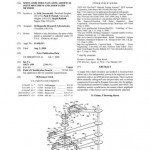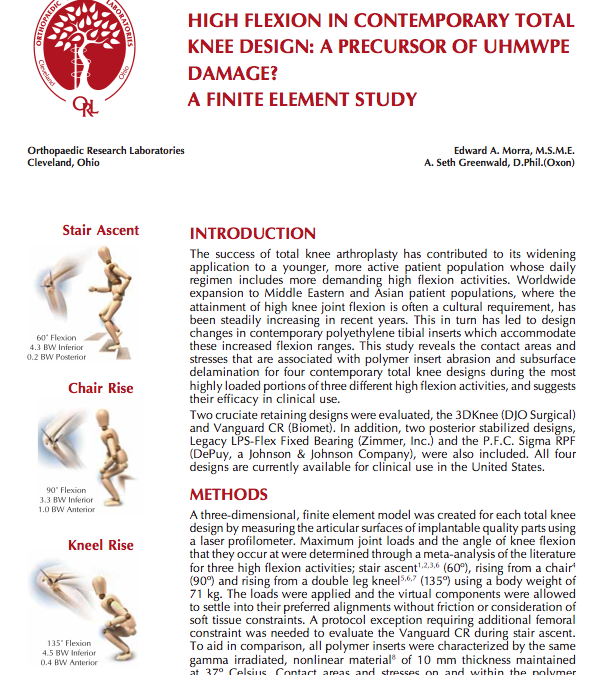
by ARC | Mar 8, 2013 | Knee
The success of total knee arthroplasty has contributed to its widening application to a younger, more active patient population whose daily regimen includes more demanding high flexion activities. Worldwide expansion to Middle Eastern and Asian populations, where the...
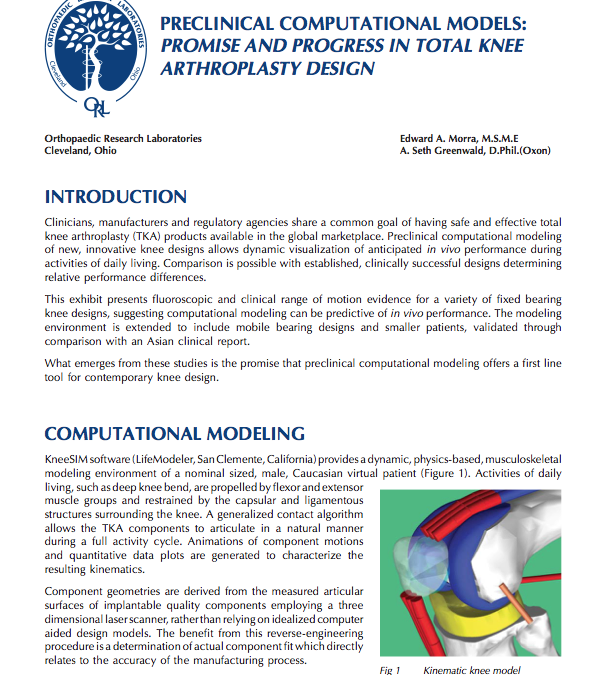
by ARC | Mar 8, 2012 | Knee
Clinicians, manufacturers and regulatory agencies share a common goal of having safe and effective total knee arthroplasty (TKA) products available in the global marketplace. Preclinical computational modeling of new, innovative knee designs allows dynamic...
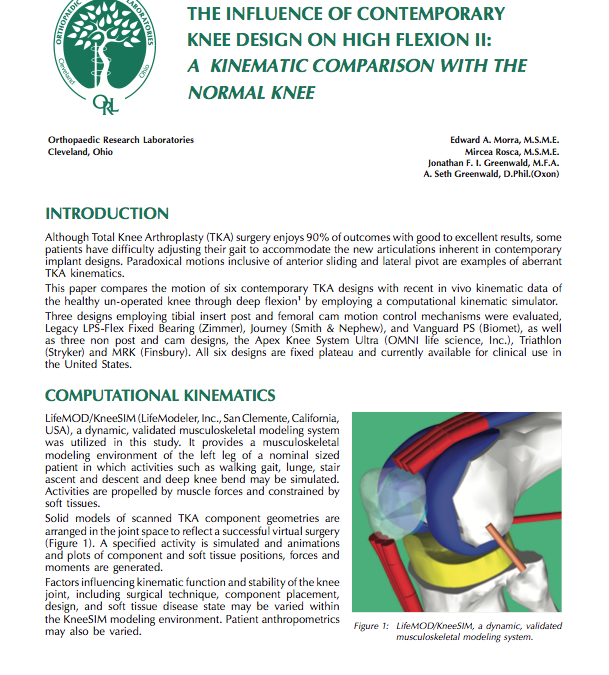
by ARC | Mar 8, 2009 | Knee
Although Total Knee Arthroplasty (TKA) surgery enjoys 90% of outcomes with good to excellent results, some patients have difficulty adjusting their gait to accommodate the new articulations inherent in contemporary implant designs. Paradoxical motions inclusive of...
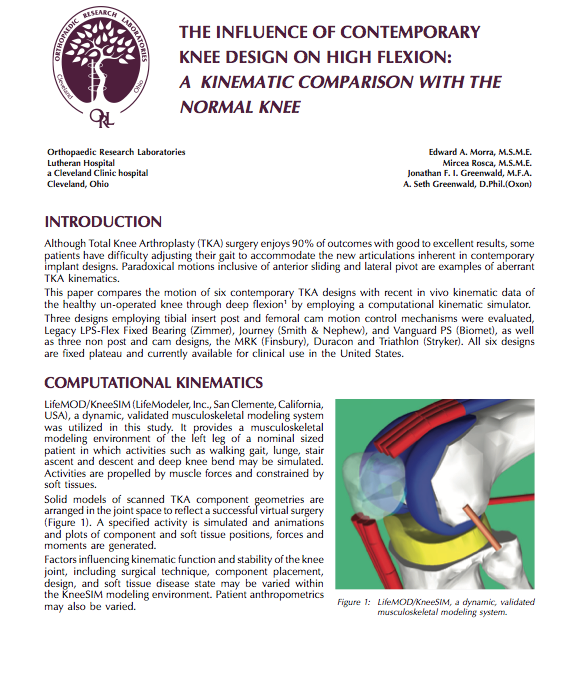
by ARC | Mar 8, 2008 | Knee
Although Total Knee Arthroplasty (TKA) surgery enjoys 90% of outcomes with good to excellent results, some patients have difficulty adjusting their gait to accommodate the new articulations inherent in contemporary implant designs. Paradoxical motions inclusive of...
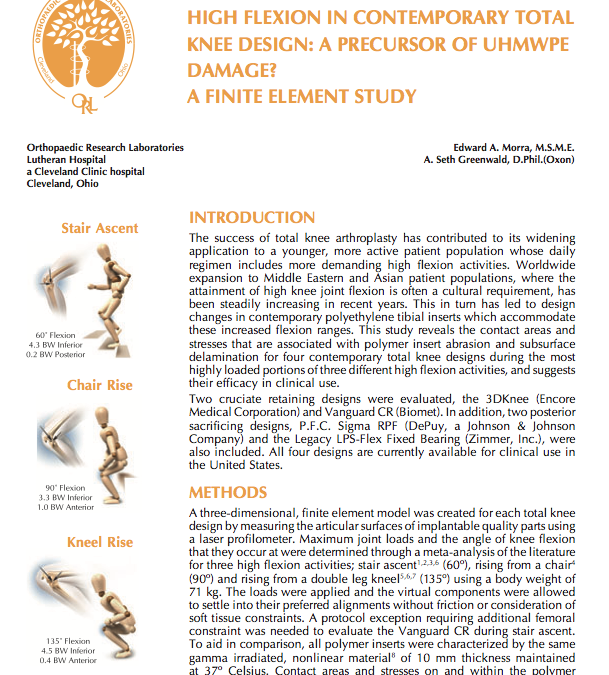
by ARC | Mar 8, 2007 | Knee
The success of total knee arthroplasty has contributed to its widening application to a younger, more active patient population who daily regimen includes more demanding high flexion activities. Worldwide expansion to Middle Eastern and Asian populations, where the...







